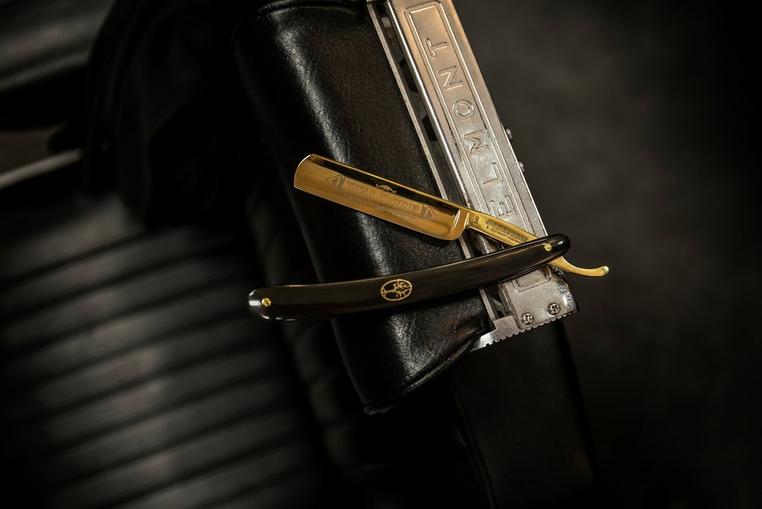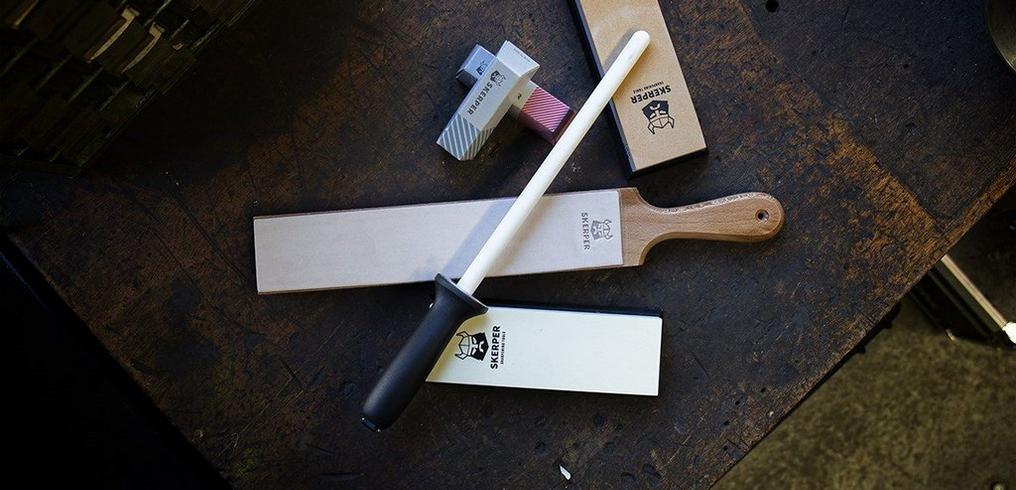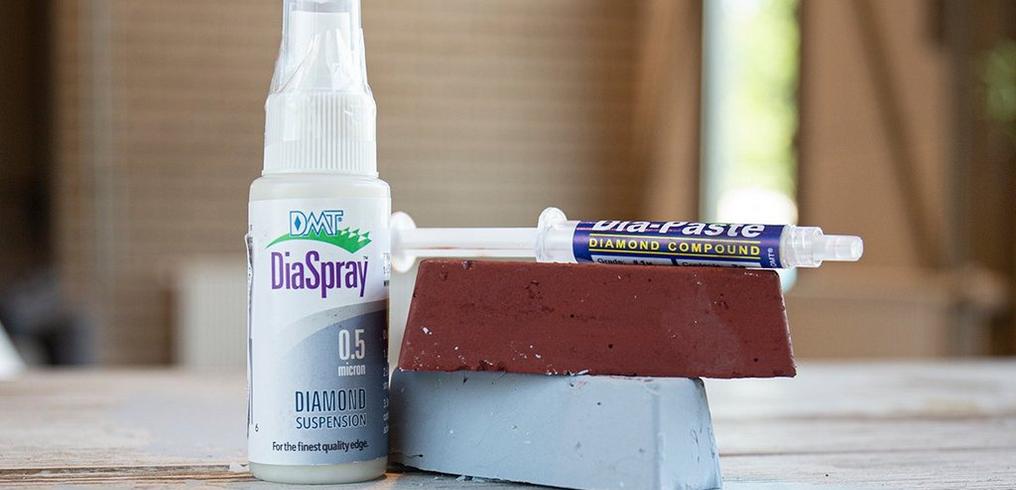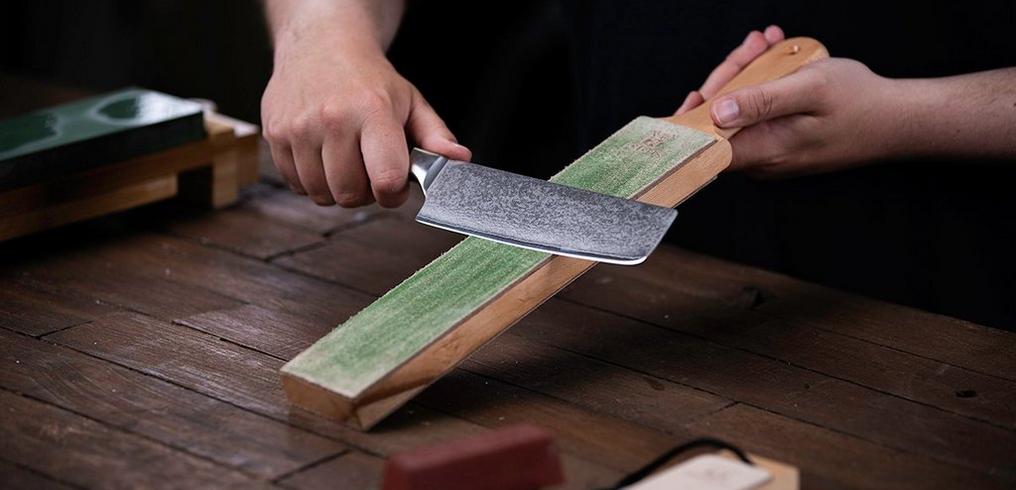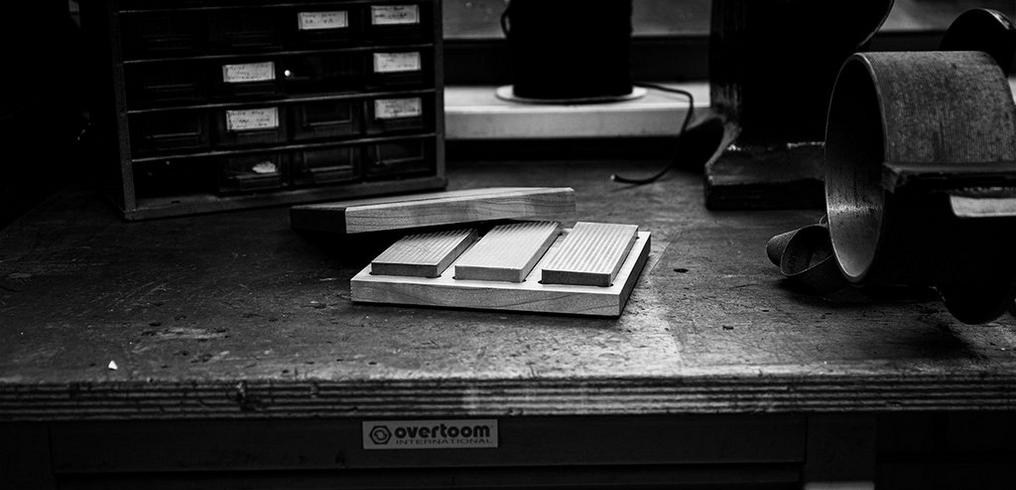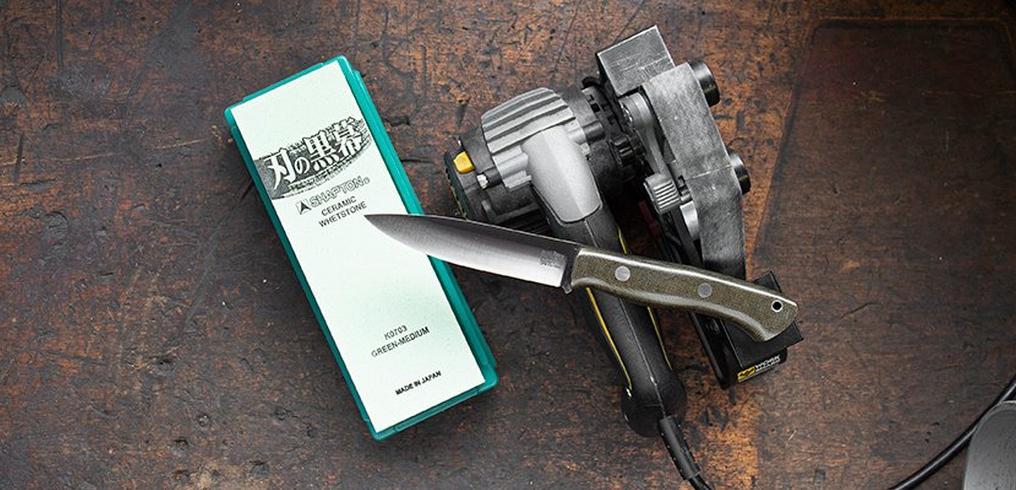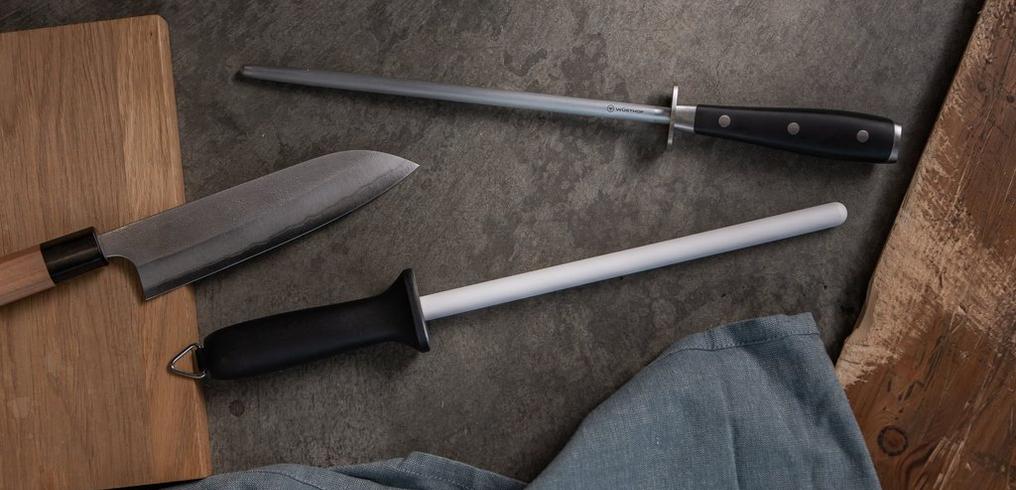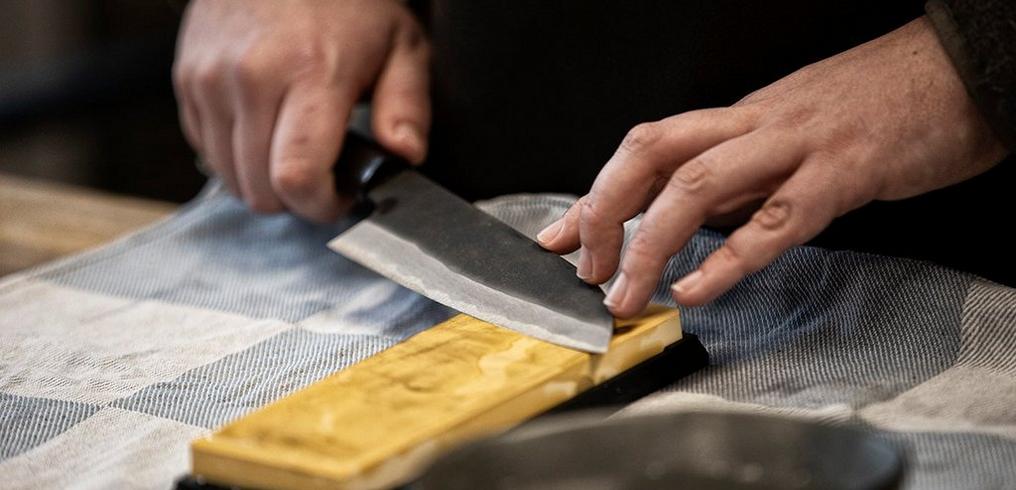How do you sharpen straight razors?
The classic razor has made a comeback. Barber shops adorn the city streets, but also shaving yourself with a straight razor is incredibly popular. We completely understand! With a good razor you can shave smoother than before and create the cleanest lines. There is, however, one condition: your knife needs to be more than razor-sharp.
As with any knife a straight razor will become blunt after some time. You need to make sure it doesn’t. After all, blunt knives can leave you with nasty injuries. For that reason there are different sharpening stones and leather strops you can use to maintain your straight razor.
The leather strop is the tool you will use most often. You should strop your razor before and after any shave – some even strop in between shaving. Sharpening on sharpening stones will only occur a couple of times a year because you don’t want to remove too much material, and razors are already pretty narrow to begin with. Many who use straight razors ask a professional to maintain their razor. We understand, however, you can definitely do this yourself as well. Keep in mind though that stropping is key!
The most important thing to realize is that you will need multiple grain sizes (so multiple sharpening stones) to make sure you end up with a razor-sharp razor. Shaving with a ‘relatively sharp’ blade won’t be an option. You will pull out the hairs instead of shaving them which could leave you with an irritated skin.
Start with a relatively fine grain
It is best if you start with a sharpening stone with a grainsize of about 1000. After all, we assume that your knife is not so blunt you won’t be able to use it. In that case you would need to start with a coarser stone. This, however, does mean that you remove a lot of material which is something you don’t want. So make sure you prevent starting with a grainsize that is too coarse.
With the 1000 stone you remove minor damage done to the edge and make sure it is straight. Use while sharpening the entire length of the sharpening stone and move it in the direction of the spine of the knife. With the 1000 stone you already end up with a relatively sharp knife. If you do it right you will feel a burr start to emerge. If so you can continue with the next stone.
Phase two: polishing a razor
During phase two you start polishing the razor. Ideally this would be with a 2000 stone. However, if you don’t own this type of stone or if you don’t want to spend too much on multiple sharpening stones you can skip the 2000 stone and continue with the 4000 stone. This does, however, mean that you need to sharpen a little longer with this stone.
Anyway: when you reach this point you need to consider the edge of your razor to be an incredibly fragile piece of glass. It shouldn’t come into contact with anything but the sharpening stone, the leather strop, and later on your face.
Afterwards you complete the sharpening process with a very fine sharpening stone, approx. Grain 8000 to 16.000. You could, of course, always continue with, for instance, a 30.000 stone, if you own one. A tip: use a Coticule natural stones, these are perfect when polishing straight razors. Do keep in mind that they are flat. Completely flat. If your stone is only slightly hollow this will definitely affect the sharpening results. That is also why you should regularly lap your stones with a special lapping stone. If you use diamond-coated sharpening stones this isn’t necessary because these stones do not have the tendency to wear out. However, because diamond-coated sharpening stones remove a lot of material, and because straight razors are quite fragile and narrow, we do not recommend using these types of stones when sharpening your razor.
Stropping your straight razor
After polishing your razor you can strop it. Use a stropping belt in combination with a stropping compound. We recommend chromium or diamond compound when stropping straight razors. You use both sides of the stropping belt. After the sharpening stones you start by using the coarse side of the belt, on which you spread out the stropping compound. With it you remove the last remaining visible burrs.
Finally, you use the smooth side – without compound – for the finishing touch. We recommend doing this after every shave to make sure you will always use a razor-sharp (and safe) knife. As you strop the knife always move towards the spine of the knife, so away from the edge. As such you make sure you don’t cut into the belt. Alternate both sides of the blade as you strop it.
Precision and patience are key
Sharpening and stropping a straight razor requires some patience. It is important to do this very accurately and with only one sharpening stone you won’t really get the job done. Because you use different stones, a good strop and a compound it is quite an expensive task. It does, however, need to be said that you can enjoy these stones for life. We will therefore give you a couple of tips that can help you out in the coming years.
Recommended sharpening stones
With the Shapton Glass Stone sharpening stone set you will have all grain sizes you could possibly need to sharpen a straight razor. The set contains sharpening stones with grain sizes 1000, 3000 and 8000, including a sharpening stone holder. The advantage of these Glass Stones is that they don’t wear out very quickly, and don’t need to be lapped often. The stones are ‘splash & go’, which means that you only have to add a little bit of water before you can get started.
An alternative are the Shapton Pro Stones. These are a little thicker than the Glass Stones and can therefore be used even longer. They also don’t wear out quickly and are also splash & go. The same applies to the Naniwa Professional Stones. Very hard Japanese sharpening stones that feel a little softer than the Shapton Pro stones. An excellent choice when sharpening your straight raxor.
Like Shapton Skerper also produces a very complete sharpenings tones, which will help you during every phase as you sharpen your straight razor. The Skerper Professional set contains a 220 stone (If you put sharpening off for quite a long time), and a 1000, 2000 and 5000 stone. You could, for the final polishing phase also purchase an individual 8000 or 16.000 stone.
You can also use the Belgian natural sharpening stones from Ardennes Coticule, which we already mentioned before. This is an ‘old school’ favourite amongst straight razor fanatics. These Belgian chunks leave an amazing finish and have been used for thousands of years. Combine them with a slurry stone for even more finesse. The grain sizes of these stones are approx. 6000 and 8000, perfect for that amazing finish. If you think of purchasing these stones, also get the 1000 and a 3000/4000 stone to start with.
Recommended strops and compound
When stropping your straight razor you can use a leather shaving belt or so-called stropping paddles: leather strips attached to a piece of wood, to stabilize it. In the ideal world you use a paddle strop with stropping compound immediately after sharpening your razor on your stones and a leather shaving belt (without compound) every time before you start shaving. You could, however, also use both sides of a belt and leave the paddle behind.
You use the stropping compound to give the strop a little more ‘grit’ or when you polish your razor. Skerper, for instance, produces a set of four compounds, from coarse to ultra-fine. You can use a compound for many years.
Finally, there are different products you can use to keep your sharpening stones in great shape. If you use a diamond-coated sharpening stone, you can perfectly use it for this purpose. If you don’t own this type of stone you can also think of purchasing a special lapping stone.
